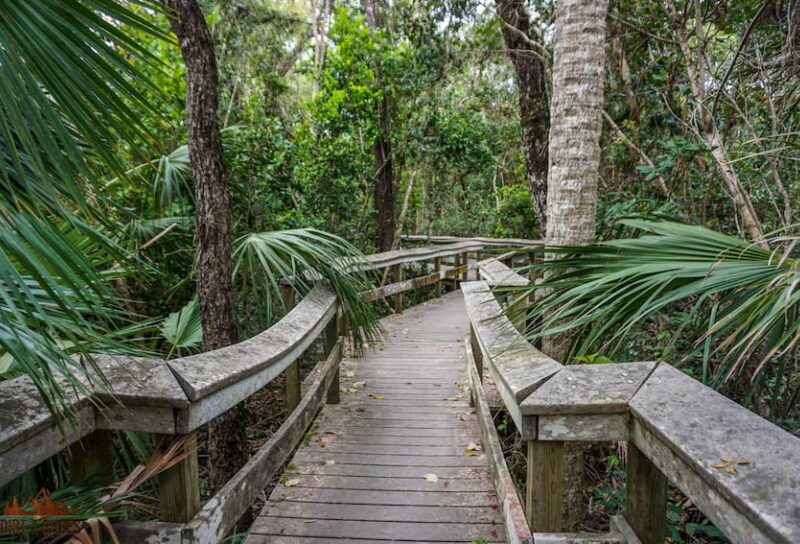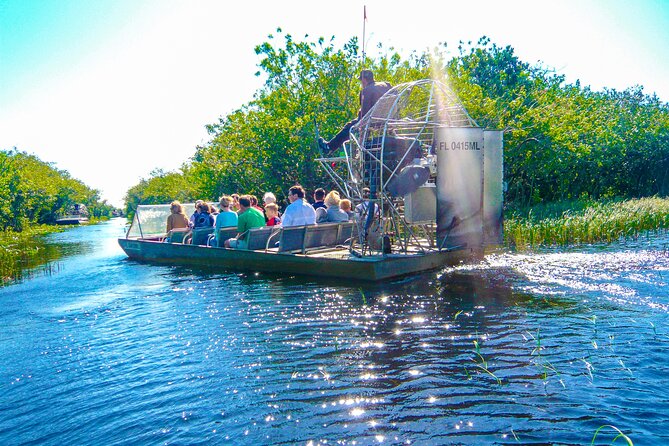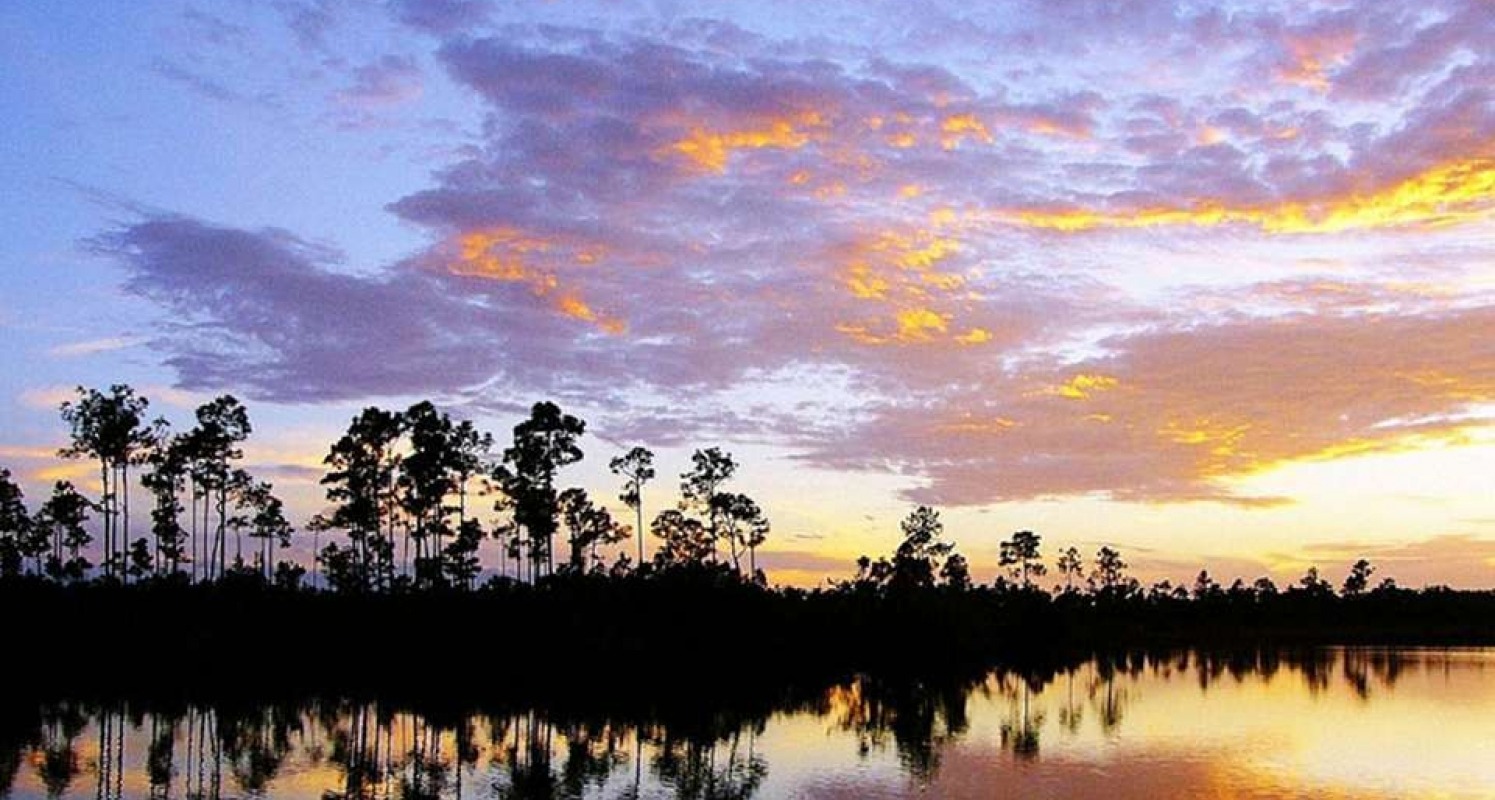Everglades National Park – A Treasure Trove of Nature’s Splendor
An excursion to Miami, Florida, remains incomplete without a visit to the Everglades National Park, an expansive wildlife reserve located just outside the city. Renowned for its stunning biodiversity, this park offers a captivating retreat into the heart of nature, away from the hustle and bustle of urban life.
A Snapshot of the Everglades National Park
Sprawling across 1.5 million acres of tropical and subtropical habitats, the Everglades National Park is the largest protected wilderness of its kind in North America. This vast expanse, often referred to as the ‘River of Grass,’ is a UNESCO World Heritage Site, an International Biosphere Reserve, and a Wetland of International Importance.
The park is home to an array of unique ecosystems, making it a hotspot for wildlife enthusiasts. From alligators to manatees, crocodiles to exotic birds, the Everglades teems with diverse species that thrive in its wetlands, swamps, mangroves, and forests.
Planning Your Visit
When planning a trip to the Everglades, it’s essential to understand the park’s size and complexity. With three main entrances in different parts of south Florida, strategic planning is crucial to maximize your experience.
Seasons and Weather
The Everglades experiences two distinct seasons – the wet and the dry. The dry season, which runs from November to March, is considered the best time to visit. During this period, the park basks in warm, sunny weather, perfect for exploring its various attractions. However, from April to October, the park often turns hot and humid, and some facilities operate intermittently due to the off-peak period.
Entrance Points
The three main entrances to the park are the Gulf Coast Visitor Center, the Shark Valley area, and the Ernest F. Coe Visitor Center. Each of these entrances offers unique perspectives of the park, so choose your entry point based on your interests and the activities you want to indulge in.
Visitor Centers
The park houses several visitor centers, each providing valuable insights about the park’s ecosystem, wildlife, and history. These include the Ernest F. Coe Visitor Center, the Royal Palm Visitor Center, the Flamingo Visitor Center, and the Shark Valley Visitor Center. Here, you can avail of maps, brochures, and information about ranger-led programs.

Things to Do in Everglades National Park
The Everglades National Park offers a wide array of activities for visitors of all ages and interests. From hiking and biking trails to canoeing and boating routes, there’s something for everyone.
Wildlife Viewing
The park is a haven for wildlife enthusiasts. The Anhinga Trail, the Gumbo Limbo Trail, and the Shark Valley’s 15-mile bike trail are excellent spots for wildlife viewing. Here, you can spot alligators, crocodiles, turtles, and numerous bird species.
Boating and Fishing
For water enthusiasts, the park offers several boating and fishing opportunities. Whether you want to glide over Florida Bay by tour boat or kayak or fancy a fishing trip, the Everglades has you covered. However, remember to get the necessary fishing licenses if you plan to fish independently.
Biking
Biking is another popular activity in the park. The Shark Valley’s 15-mile Tram Loop is a favorite among visitors. As you bike along this trail, you can enjoy stunning views of the park and its inhabitants.
Camping
For the more adventurous, the park offers both front-country and backcountry camping options. The Long Pine Key Campground and the Flamingo Campground are excellent spots for traditional camping. For backcountry camping, you can choose from various beach and ground sites throughout the park.
Airboat Tours
To explore the park’s wet prairies, consider taking an airboat tour. These flat-bottomed watercraft navigate the Everglades delicately, preserving the vegetation and avoiding debris. Several authorized airboat businesses operate within the park, offering thrilling experiences.

Exploring Local Culture
The Everglades region is rich in cultural heritage. The Miccosukee Indian Village offers fascinating insights into the tribe’s history and lifestyle. Here, you can tour exhibits showcasing their earliest clothing, tools, and beadwork.
Safety Tips for Visitors
While the Everglades National Park is a captivating destination, it’s important to keep safety in mind during your visit. Always inform someone about your itinerary if you plan on an extended hike or backcountry camping. Be prepared for sudden weather changes, especially if you’re on the water.
Remember, swimming is not recommended due to the presence of alligators, sharks, and barracudas. Always keep a safe distance from wildlife and do not feed the animals. It’s also essential to pack insect repellent, as the park is home to mosquitoes and biting flies.
Preserving the Everglades
The Everglades National Park is not just a tourist attraction; it’s a vital ecosystem that supports a diverse range of species. As a visitor, it’s important to remember that our actions can have lasting impacts on this delicate environment.
Organizations like The Alliance for Florida’s National Parks work towards preserving the park’s vitality. They accept donations that support youth environmental education programs, ranger-guided tours, habitat protection programs, and more. As we enjoy the splendors of the Everglades, let’s also do our part in safeguarding its future.
PLAN A TRIP TO THE EVERGLADES
The Everglades National Park is a testament to nature’s splendor and resilience. Nestled in the heart of Florida, this park invites us to immerse ourselves in its lush landscapes, witness its diverse wildlife, and appreciate the intricate balance of its ecosystems. As you plan your visit to the Everglades, remember to respect the park’s rules, prioritize safety, and do your part in preserving this natural treasure.
